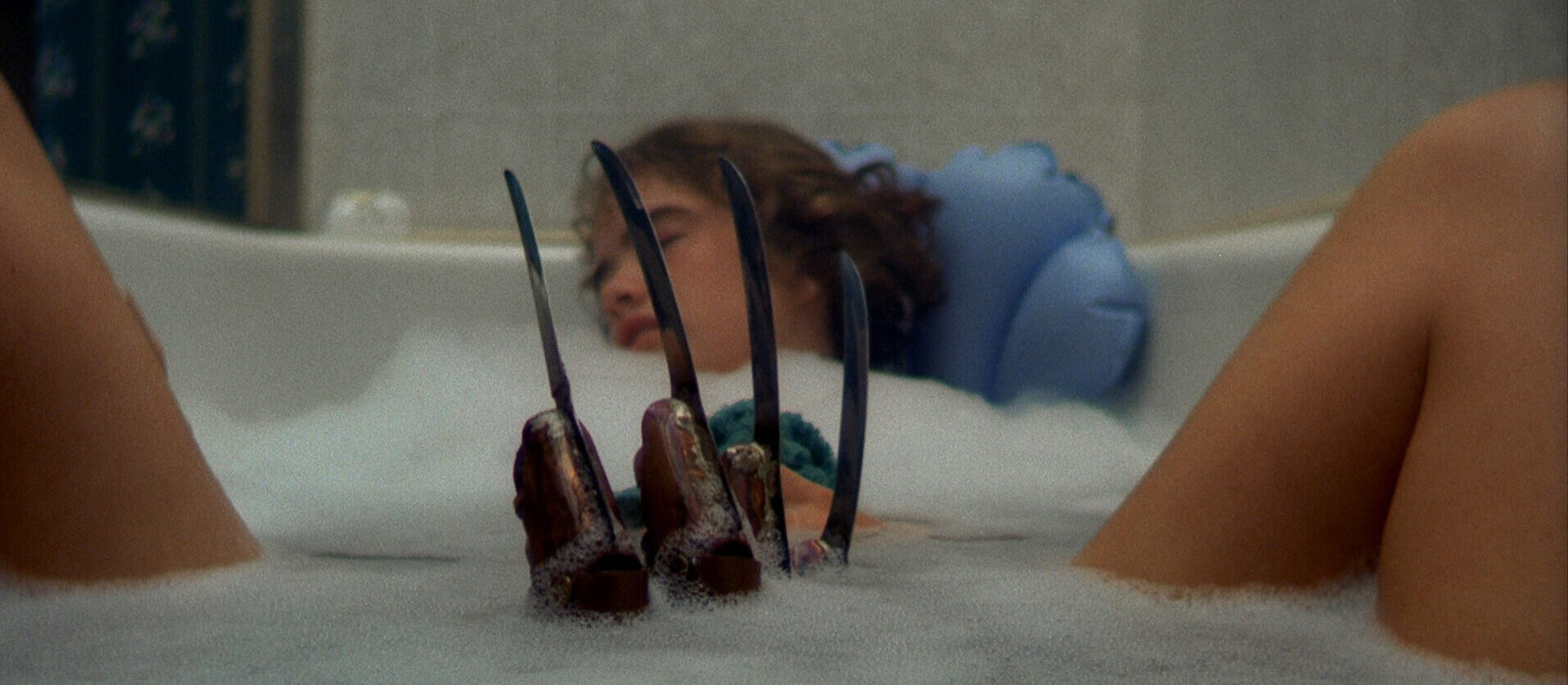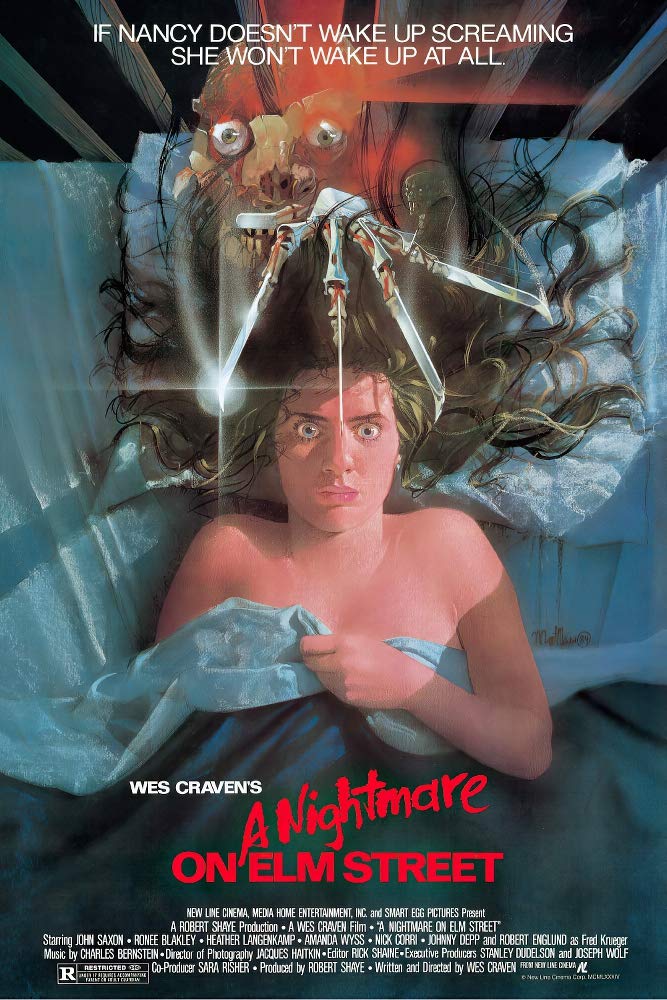

“What the hell are dreams anyway?”
Coming at the end of the slasher boom and briefly rejuvenating the genre, Wes Craven’s formula-breaking A Nightmare on Elm Street introduced the world to the iconic Freddy Krueger (Robert Englund), a supernatural, knife-fingered serial killer who stalks children through their dreams while slinging one-liners. Unlike contemporary horror villains like Michael Myers and Jason Voorhees, Freddy is loquacious and maskless, giving him a good deal more personality than is customary in the genre.
Though built on a startling premise—stay awake or else be sliced and diced by a disfigured sadist with razor sharp claws—the film takes itself much less seriously than other perennial slasher classics such as The Texas Chainsaw Massacre or Halloween. And to be sure, it’s all the better for it. While offering all of the requisite viscera, it is marked by a playfulness in its breaking down of the boundaries between the sleeping and waking worlds. Sometimes it’s obvious when a character is stranded in a lawless dreamscape, but other times we are caught off guard, and still other times we think they’re dreaming when they’re not. Further, because Krueger is not a flesh-and-blood physical entity like his forebears, he is not bound by conventional limitations. He can lurk in the depths beneath the surface of a bubble bath, he can move through walls, he can invade the dreams of a person sleeping in the middle of class in broad daylight.
Chief among the film’s assets are game final girl Heather Langenkamp (a feisty heroine as much as a scream queen, though she’s got a stellar set of lungs) and the director’s anything-goes approach. Once the can of worms has been opened and we move into the realm of dreams, and of dreams-within-dreams, the film becomes a breakneck extravaganza of atmospheric frights, memorable murders, slimy slapstick, and surreal low-tech special effects. The secret weapon is the twice-used rotating room—first Tina’s (Amanda Wyss) butchered body is flung all over the room in gravity-defying fashion, later a blood geyser shoots out of the bed that just swallowed Glen (Johnny Depp) and pools on the ceiling—but the ubiquitous practical effects work matches Craven’s twisted imagination beat for beat. Animated corpses in body bags, gooey staircases, flaming madmen, fleshly telelphones, you get the gist. Unfortunately, the studio forced a nonsensical macabre twist ending on the director, who kept his distance from the uneven series until returning for the metatextually-minded Wes Craven’s New Nightmare.